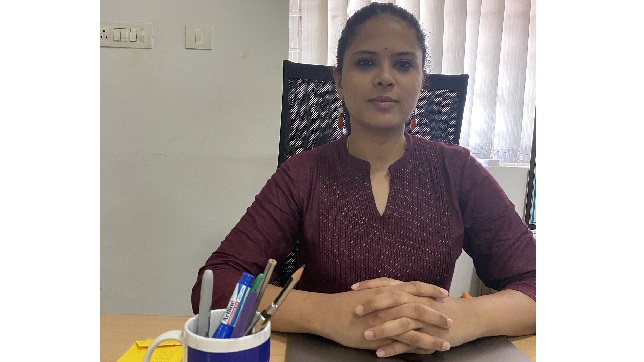Vehicle Telematics in Commercial Vehicles in India

N. S. Rama Rao Body Works has been in the business of heavy vehicle body fabrication since 1963. In NSR’s 57 years of operation, we have made over 30,000 tankers and gained a reputation for our focus on quality and strict adherence to industry standards. Our primary products are Top and Bottom Loading Tankers and Mobile Fuel Dispensers. NSR has worked with all the major oil companies such as HPCL, BPCL, IOCL and Essar, manufacturing high quality vehicles as per the industry specifications. We are also considered the Industry expert on Bottom Loading Tankers and are on the PESO board among 5 Heavy Vehicle Fabricators from all over India.
In the previous decades, all that was required from a tanker was to move product from Point A to Point B. However, one thing we noticed repeatedly in our interactions with our customers was that the knowledge gap of the time between dispatch and return of their vehicle was massive. Fleet owners had no idea what was happening in between during the actual operations of their vehicle. A need to keep track of their fleet at all times, optimise fuel consumption, reduce pilferage and ensure driver safety has led to the mainstreaming of vehicle telematics solutions in fleet operations.
In the consumer vehicle market, vehicle telematics are mostly necessary for communication, navigation and safety of the traveller. For a fleet or heavy vehicle owner, the need varies. Their requirements are mostly for tracking driver routes and product levels, improving travel safety and increasing profit margins. At NSR, to help our customers improve oversight into their tankers’ operations, we have installed GPS systems in our fuel tankers. They combine a GPS receiver and a GSM device and the data is communicated to the user through the web or an app. Sensors are used to track fuel levels to give additional information to the owner.
Our GPS systems are tracking vehicle location in real time, so that a vehicle owner can pinpoint the location of their tanker at any point of time. This way, they are able to monitor their drivers to ensure that they are following assigned routes and not taking unplanned detours. They can also get live traffic reports so road congestions can be avoided, and route replay so that previous travel data can be analysed. They are able to give a comprehensive view into driver activity and vehicle health.
In the heavy vehicle industry, telematics has helped vastly improve fleet safety. Driver behaviour such as sudden braking, travel speed and sudden acceleration can be observed. As per research findings, over a period of just 3 years, a fleet management company managed to reduce accident rates by almost 59% after GPS implementation. What is of paramount importance is continuous assessment of this data and acting on this data through driver training and monitoring.
Another major use of GPS systems is to track vehicles if they get stolen. Real-time tracking can show exactly where the tanker is at any point of time, and alerts are continuously sent to be able to accurately locate it. In fact, ever since GPS systems have been becoming part of vehicles, the number of reported vehicle thefts has dropped drastically. Also, when a vehicle is installed with GPS, it acts as a deterrent for the driver to make illegal or unauthorised trips.
One of the largest problems being tackled, thanks to GPS technology, is product pilferage. In countries like India, a major source of loss for tanker owners is theft of fuel. Usually, this fuel is stolen for personal use by the driver or for unauthorised vehicles or locations. We are helping our customers by improving their supervision of the vehicle’s fuel consumption. Besides this, there is a need to ensure the safety of the product being transported. We are in the process of introducing a special GPS locking system that can only be opened upon entering an OTP, so that access to the product is limited, will ensure that the owner has absolute control over the process. We supplement this with our own tankers’ single locking system, ensuring absolute protection of the product.
Apart from the ability to track the fuel consumption of the tanker, any suspicious or lengthy stops can be recorded, with the owner immediately alerted. This can happen via SMS, Email or our app so they can act immediately on the information. Heavy Vehicle idling is a major source of fuel consumption. Research has shown that long haul trucks on average are idle for 6 hours a day. Extrapolating this over a year, assuming that a 19 tonner consumes 1.5L/hr when idle, it imputes an expenditure of almost Rs 2,40,000 a year on just vehicle idling. Not only is this an unnecessary added cost for the tanker owner it is an increase in the emission of polluting gases. On top of all this, a truck idling for an hour is equivalent to it being driven for 11 kms, and there is also the added consumption of engine oil. This is an increase in operational costs, and by analysing driver behaviour in real time and passively, fleet managers can ensure idling time is controlled.
By being able to analyse traffic along the driving route and other data such as driving speed and driver behaviour, it is possible to optimize the best path for the vehicle to take, the best time to travel, and predict refuelling times and number of stops to take. All of these capabilities lead to increased efficiency in operations and improved profitability, by reducing vehicle idling times, decreasing the chance of getting caught in traffic congestions, etc.
Our sensors can also send alerts if the battery is getting low, if there are fuel dips, if the sensors are damaged and for various other scenarios. By anticipating these hassles and preparing for them, fleet owners are able to allay their fears to a major extent about operations management.
While all this data collection is incredibly important and is practically currency in this age of information, it is also important to handle it properly. In the context of fleet management, this spatiotemporal data must be queried and analysed to be able to present information to the fleet owners in a lucid manner, and so that it is not simply an overload of information.
We have been able to provide the best system for our customers, such that billions of datapoints are extracted and presented usefully to help our customers. Our GPS systems can be accessed by Email and app, with a one-time payment followed by an annual subscription. This value addition to our tankers help our customers with risk management, improved profitability and operational oversight. We will soon be introducing Geofencing capability in our tankers, so that when the vehicle exceeds a certain set speed or goes outside a predetermined radius, a system alert will be sent through the app or SMS. Fleet managers can immediately contact the operator and act proactively to mitigate any transgressions.
In India there is a need for telematics for fleet management for reducing pilferage, improving driver oversight, maximising operating efficiency and prolonging vehicle life. This can be done by gleaning as much information about the vehicle during its operation. GPS systems and vehicle telematics can do this and are the future of the industry. The exponential increase in information acts as a competitive advantage to any fleet owner, with the prospect of superior efficiency in the supply chain, improvement in safety and longevity of the fleet and increased profitability.
Citations
- Waiyaki, E.C. and Brits, A., 2015. Leveraging Telematics for Optimal Fleet Performance. International Journal of Business, 1(1).
- Hoffman, Alwyn J., Marius Van der Westhuizen, and Jitesh Naidoo. “An investigation into the economics of fuel management in the freight logistics industry.” 17th International IEEE Conference on Intelligent Transportation Systems (ITSC). IEEE, 2014.
- Gaines, Linda & Vyas, Anant & Anderson, John. (2006). Estimation of Fuel Use by Idling Commercial Trucks. Transportation Research Record. 1983. 91-98. 10.3141/1983-13.
- Tenzer, Stephen, Benjamin J. Nielsen, and Jon Passman. “System and method for identifying fuel savings opportunity in vehicles.” U.S. Patent No. 7,877,198. 25 Jan. 2011.
- https://venturebeat.com/2018/12/04/vehicle-telematics-data-could-unlock-1-5-trillion-in-future-revenue-for-automakers/
Author:
Shringa Murali graduated from Stanford University in 2011 with a Masters in Management Science and Engineering where she developed an interest in design thinking and entrepreneurship. After working in the US for a few years, she returned to India to join her husband Ajay Mahesh in his family enterprise, N.S. Rama Rao Body Works. where she works on online marketing, brand management and sales. She loves watching movies, gardening and is a fitness enthusiast.
Published in Telematics Wire



One Comment